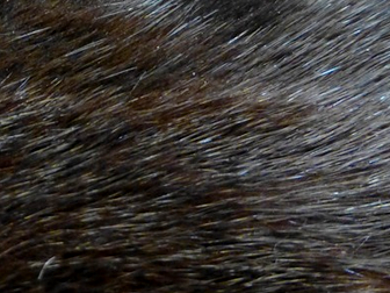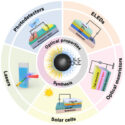Surfaces with specially aligned fibers are quite abundant in nature and have different functions such as sensing, adhering, and self-cleaning. For example, the feet of geckos are covered with millions of hairs that allow them to adhere to surfaces and pull off again easily. The synthesis of such surfaces opens up new perspectives for different applications. However, methods previously available for the production of polymer pelts on solid bases have been costly and the size, shape, and alignment of the fibers can only be controlled to a limited extent.
Nicholas L. Abbott, University of Wisconsin–Madison, Madison, WI, USA, Joerg Lahann, University of Michigan, Ann Arbor, MI, USA, and colleagues, have developed a simple and cost-effective process that allows polymer pelts to grow in a self-organized way. The team covered a carrier with a thin layer of liquid crystals. The liquid crystal layer is then exposed to activated molecules by vapor deposition. Low concentrations of these radical monomers penetrate the liquid crystalline layer and grow from the substrate into the liquid in the form of fine fibers. This minimizes monomer-induced changes to the liquid-crystal phase. As a result, polymer nanofibers are created that can be customized in length, diameter, shape, and arrangement.
- Templated Nanofiber Synthesis via Chemical Vapor Polymerization into Liquid Crystalline Films,
Kenneth C. K. Cheng, Marco A. Bedolla-Pantoja, Young-Ki Kim, Jason V. Gregory, Fan Xie, Alexander de France, Christoph Hussal, Kai Sun, Nicholas L. Abbott, Joerg Lahann,
Science 2018.
https://doi.org/10.1126/science.aar8449




